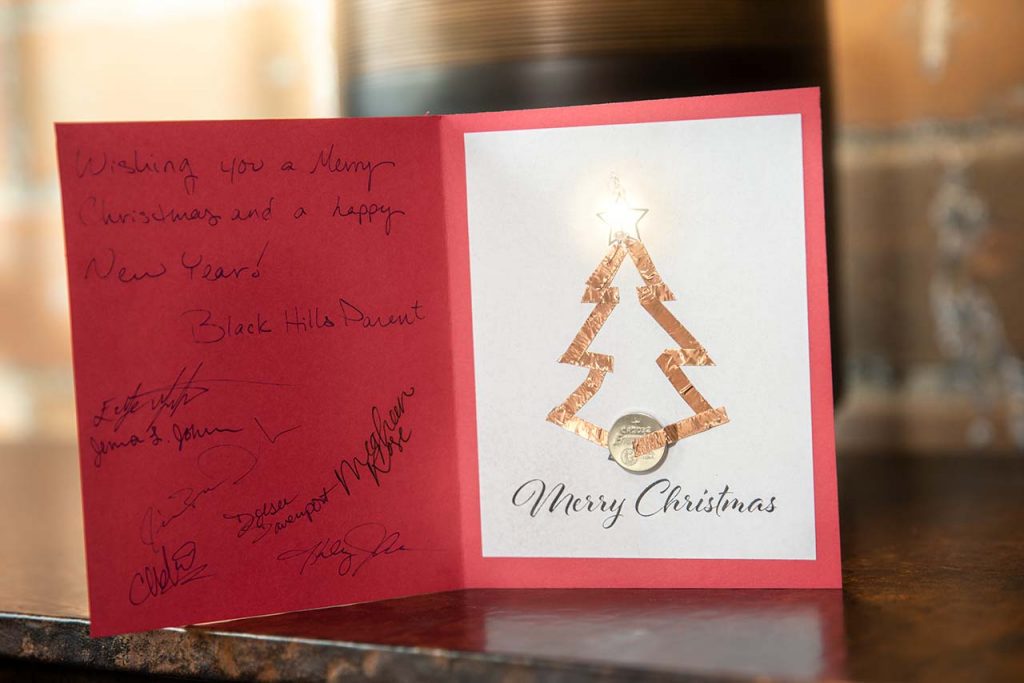With the holiday season upon us, greeting cards are a popular way to send love and greetings to our family and friends. With this craft, you can also teach your kids a little bit about electric currents and basic engineering.
Materials list:
- Cardstock in festive colors
- ¼” double-sided conductive copper tape
- Scissors
- 3V button battery
- 5mm LEDs
You can usually find the tape, battery, and LEDs at your local hardware or craft store
Note: button batteries are very dangerous if swallowed! Make sure you supervise children at all times — we recommend counting your batteries before and after this craft to make sure all are accounted for.
Steps:
- Decide what shape you want your circuit to be. Simple shapes with straight edges work best. You can draw a shape on the cardstock as a guide to make taping easier.
- Place your copper tape on the cardstock in your chosen design. Make sure you leave a gap in the tape where your LED will go, and another one for the battery.
- Now is when the learning begins! In order for a circuit to work, electrons must flow from the negative side of the battery to the negative end of the LED, and then from the positive end of the LED to the positive side of the battery.
- Look at your LED light; the two wires should be different lengths. The shorter wire is the negative end, and the longer wire is positive. The sides of the battery should be marked with a + and – sign.
- Place your battery negative side down, touching the copper tape. Then place your LED in the middle of the gap in your tape with the two wires touching the tape, but not each other (you don’t want to short circuit it).
- Complete the circuit by connecting the tape on your card to the positive side of the battery with a small piece of tape. The LED should light up, but if it doesn’t, flip your battery over and try again.
- Once your LED lights up, you can secure it in place by taping the wire ends in place with more copper tape.
- After they’ve mastered this craft, challenge your kids to experiment with having two LEDs in their card. You can even explain the difference between parallel and series circuits, or discuss if one battery is enough to power more than one LED.
If your LED doesn’t light up or your kids get frustrated, help them walk through the steps of a circuit again. A lot of STEAM fields involve trial and error and overcoming obstacles, so try not to step in and just solve the problem for them. Explain the flow of electricity, or encourage them to try troubleshooting on their own.
Looking for more fun games and crafts to do as a family? Check out our DIY Educational Games and Crafts!

